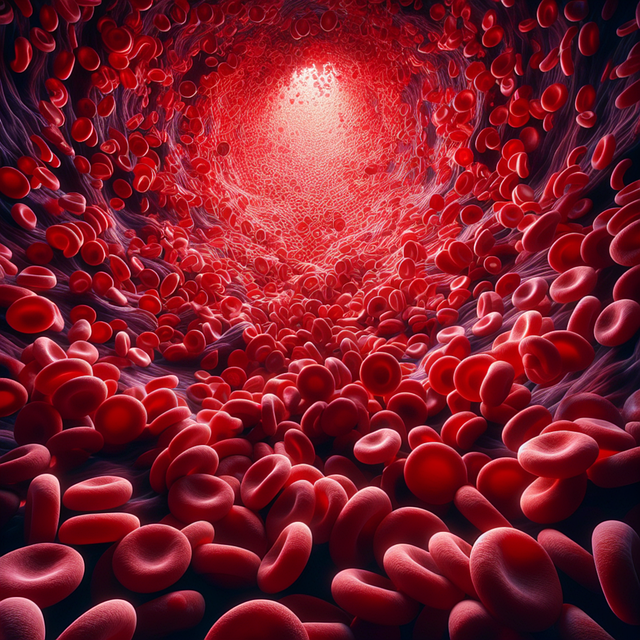Iron deficiency anemia, a leading blood disorder causing fatigue and weakness, is diagnosed in the UK using Complete Blood Counts (CBCs), ferritin tests, and specific blood markers like hemoglobin and transferrin saturation. While testosterone blood tests aren't standard, they are valuable for men with low testosterone levels. Timely diagnosis through these methods enables effective treatment, including dietary changes, supplements, or medical interventions, tailored to individual needs, including the potential need for a Testosterone Blood Test UK.
“Uncover the mystery behind iron deficiency anemia with our comprehensive guide. This condition, affecting many across the UK, can be accurately diagnosed through blood tests, offering a crucial step towards effective treatment. We explore the symptoms and the vital role of these tests in identifying anemia.
Learn about the simple procedures involved in iron deficiency anemia testing, understanding the results, and the subsequent steps for improved health. It’s time to empower yourself with knowledge, just like a testosterone blood test UK provides insights into overall well-being.”
- Understanding Iron Deficiency Anemia and its Symptoms
- The Role of Blood Tests in Diagnosing Iron Deficiency
- Iron Deficiency Anemia Testing: What to Expect and Next Steps
Understanding Iron Deficiency Anemia and its Symptoms
Iron deficiency anemia is a common blood disorder that occurs when your body doesn’t have enough iron, an essential mineral responsible for carrying oxygen throughout your bloodstream. This condition can lead to symptoms like fatigue, weakness, pale skin, shortness of breath, dizziness, and headaches. It’s particularly prevalent among women who are pregnant or menstruating, as well as individuals with certain medical conditions that affect absorption or cause chronic blood loss.
In the UK, a testosterone blood test is not typically used for diagnosing iron deficiency anemia directly, as it measures hormone levels rather than focusing on red blood cell health and iron status. Instead, healthcare professionals usually rely on complete blood counts (CBCs) and additional tests like serum ferritin to assess iron stores in the body. By understanding these symptoms and the appropriate diagnostic methods, individuals can promptly seek treatment for iron deficiency anemia, which often involves dietary changes, supplementation, or medical interventions.
The Role of Blood Tests in Diagnosing Iron Deficiency
Blood tests play a crucial role in diagnosing iron deficiency anemia, providing essential insights into an individual’s overall health and nutrient levels. In the UK, a common approach involves assessing hemoglobin (Hb) concentration, which is a key indicator of red blood cell health and oxygen-carrying capacity. A testosterone blood test UK may also be recommended as low testosterone levels can contribute to fatigue, a symptom often associated with iron deficiency. By combining these tests, healthcare professionals gain a comprehensive understanding of a patient’s condition.
Through a simple blood draw, various parameters can be measured, including ferritin levels, which store and reflect iron reserves in the body. Low ferritin is a strong indicator of iron deficiency. Other tests may evaluate transferrin saturation (TS) and unsaturated iron-binding capacity (UIBC), offering additional data points to support or rule out a diagnosis of iron deficiency anemia. These diagnostic tools enable accurate assessment, allowing for personalized treatment plans to address the specific nutritional needs of each individual.
Iron Deficiency Anemia Testing: What to Expect and Next Steps
Iron deficiency anaemia is a common condition that occurs when your body doesn’t have enough iron, leading to lower-than-normal levels of haemoglobin in your red blood cells. This can result in fatigue, weakness, pale skin, shortness of breath, and dizziness. Testing for iron deficiency anaemia typically involves a simple blood test, often referred to as a Complete Blood Count (CBC) or Iron Studies Test. During this test, a small sample of your blood is analysed to check the levels of various components, including haemoglobin, red blood cells, white blood cells, and platelets.
If the test results indicate iron deficiency anaemia, further evaluation may be needed. Your healthcare provider might recommend additional tests, such as a ferritin blood test or transferrin saturation test, to pinpoint the cause and determine the best course of treatment. In the UK, access to testosterone blood tests can also play a role in diagnosing and managing anaemia, especially for men, as low testosterone levels have been linked to iron deficiency. Once diagnosed, treatment usually involves addressing the underlying cause, such as dietary changes, iron supplements, or in some cases, medical interventions like blood transfusions or iron-rich medications.
Iron deficiency anemia, a common yet manageable condition, can be effectively diagnosed and treated through blood tests, such as those offered by healthcare providers in the UK. By understanding the symptoms and relying on scientific testing methods like testosterone blood tests, individuals can promptly address iron deficiencies, leading to improved overall health and well-being.
